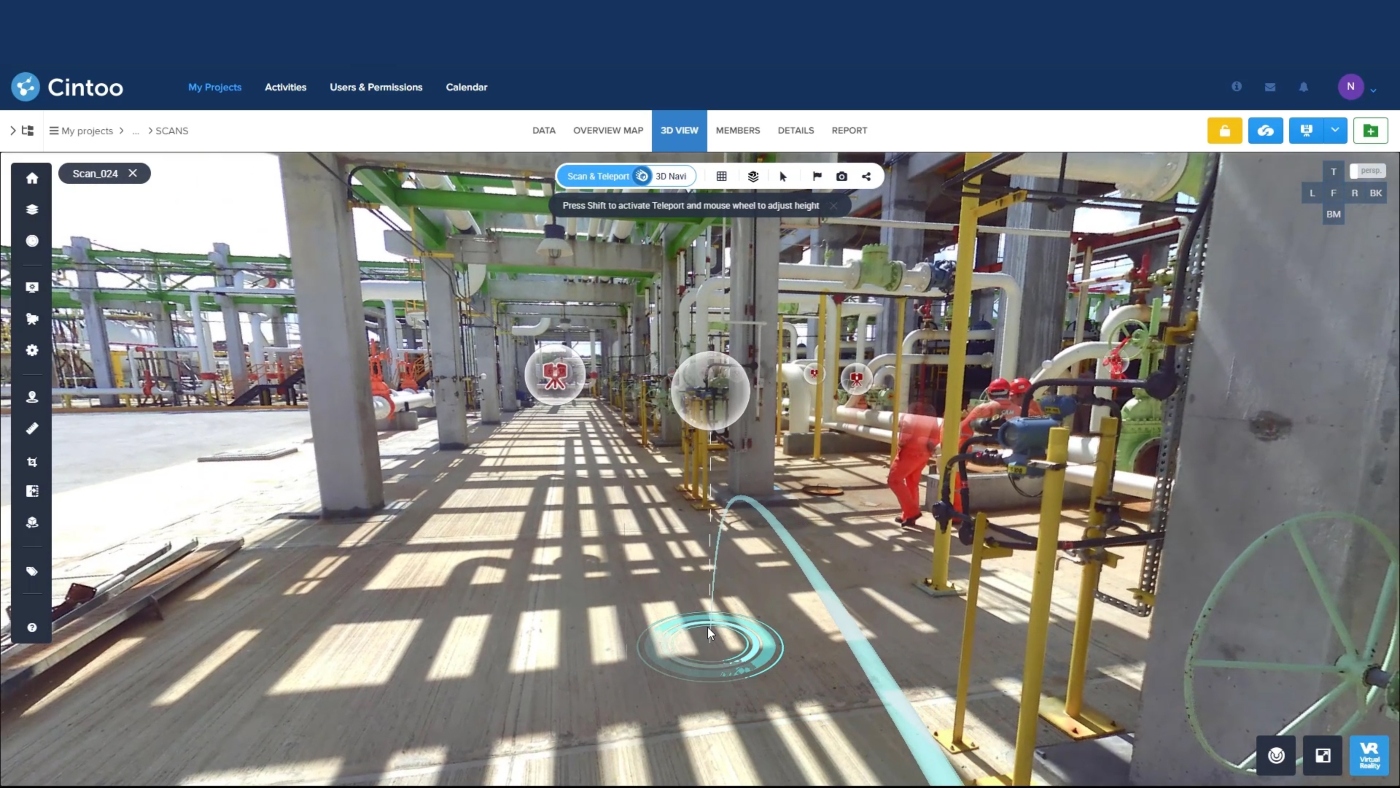
How manufacturing can use laser scan data to improve efficiency
Manufacturing businesses are increasingly seeing the value in terrestrial laser scanning to support expansions, refurbishments or retrofit operations. Using their scan data, businesses can accurately model the outcomes of system and facility upgrades.
Until now, this has been relatively time-consuming and laborious to achieve, owing to the sheer size of laser scan data which makes viewing the details and sharing files with other team members challenging.
This is where Cintoo Cloud can be transformative for the manufacturing sector.
With Cintoo Cloud, companies can compare terrestrial laser scan – or as-built – data to CAD models – the ‘design intent’ – when looking to expand, reconfigure a site or retrofit. This ensures any issues are identified (and rectified) before work commences, saving businesses both time and money.
See the platform in action: www.cintoo.com/demo
Take for instance the production of a new car model. To facilitate this, the production floor may first require a refurbishment and an investment into new machinery. By comparing your laser scan data to the CAD model, you can accurately simulate the impact of every new machine you introduce across the entire production chain. Considerations like space, installation, work streams and walkways can all be mapped out in simulation, before any physical changes take effect.
Having this foresight into future building projects at your fingertips can transform operational efficiencies, saving significant time and resources and demonstrating a clear ROI for your laser scanning investments.
Positioned at the convergence of laser scanning and Digital Twins, Cintoo Cloud enables meaningful information to be extracted from both 3D laser scans and CAD models. The platform elevates scan and BIM/CAD processes through its cloud-based workflows, encouraging laser scan data to be securely shared and collaborated on by invited project stakeholders.
Cintoo Cloud facilitates the uploading of point cloud data, transformed into 3D mesh, to its platform where it can be viewed, shared and worked on concurrently from anywhere in the world. All that’s needed is a webGL enabled desktop, laptop, tablet or smartphone and individuals can annotate or track issues on a data set, which can be assigned and emailed to another project stakeholder.
Cintoo Cloud is terrestrial laser scanning device agnostic and provides end-to-end integration with BIM software, such as Autodesk BIM 360 and BIM Track. You can upload your models to the platform, overlaying them with your laser scan data to compare the two, thereby extracting meaningful information to improve operational efficiencies.
Try the platform out by uploading your own laser scan data: www.cintoo.com/try
Cintoo Cloud has a vast array of use cases:
Asset management: Manage assets through a visual interface while keeping assets up-to-date through scans and CAD models.
Modernisation planning: Use Cintoo Cloud for clearance checks, identifying any discrepancies between the scan data and the BIM/CAD model, such as a blockage, before it leads to costly downtime.
New layouts and retrofits: Compare your as-builts to the design intent to detect issues and rectify problems before the project gets underway.
Reverse engineering: Scan machinery, equipment or your entire production floor and use Cintoo Cloud to extract meaningful information about their construction and design.
Predictive maintenance: Stay on top of your maintenance and repairs. Identify potential problems before they escalate and schedule in repairs, replacements and adequate resource.
Training maintenance and operation teams: Enable teams to view relevant data sets and learn how to extract the right information for detecting and flagging issues before they impact the production floor.
How Fiat Chrysler is benefitting from Cintoo Cloud
FCA is just one manufacturing company already leveraging the operational benefits Cintoo Cloud delivers. By using Cintoo Cloud’s visual verification and clash detection capabilities, the car manufacturer has saved hundreds of thousands of dollars per project in the last two years alone.
Previously when FCA needed to carry out Quality Assurance and Quality Control they employed a team of people to physically investigate. Now, using Cintoo Cloud, FCA can simply scan their sites, review the scan data and visually check what is happening on-site without visiting in person – significantly reducing the company’s engineering design costs.
FCA also uses Cintoo Cloud to successfully detect and resolve equipment clashes prior to installation or during the design phase. By comparing their CAD models to their scans, they’ve been able to calculate if new equipment will present any issues and adapt as necessary for seamless integration.
A further way FCA is benefitting from the technology is by achieving a more joined-up approach with its remote suppliers, coordinating on bidding, install progress and validation of the correct install locations. FCA can grant a supplier access to Cintoo Cloud for a specific project or simply make select data sets available to the supplier, without granting full access to the cloud. This saves the time and expense of the supplier travelling to the site and instead allows the data to be available remotely at any time. Using this information, FCA’s suppliers can accurately plan the installation of new equipment in the plant without setting foot on site.
If you’d like to discuss how Cintoo Cloud can help your business to achieve greater operational efficiency, email us sales@cintoo.com or visit our website to see how our customers have benefited from the platform: www.cintoo.com




